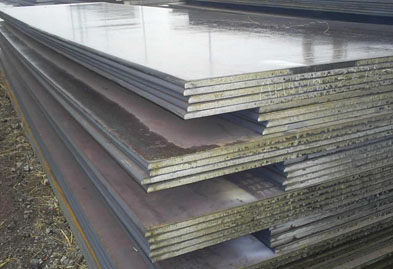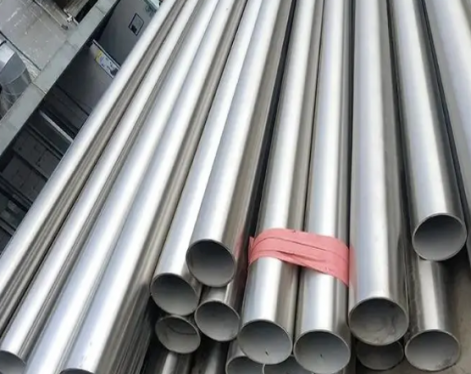1.What is steel boiler plate?
Boiler steel plates mainly refer to hot-rolled medium-thick plate materials used to manufacture superheaters, main steam pipes and boiler firebox heating surfaces. Boiler steel plate is one of the most critical materials in boiler manufacturing. It mainly refers to hot-rolled special carbon steel and low alloy used to manufacture important components such as pot shells, drums, header covers, supports and hangers in boilers. Heat-resistant steel medium-thick steel plate material.2.Boiler steel plate material
The main materials of boiler steel include high-quality structural steel and low-alloy heat-resistant steel. Commonly used boiler steels include low-carbon killed steel smelted by open-hearth furnaces or low-carbon steel smelted by electric furnaces. The carbon content Wc is in the range of 0.16%-0.26%. Since the boiler steel plate works under medium temperature (below 350ºC) and high pressure, in addition to bearing high pressure, it is also subject to impact, fatigue load and water and gas corrosion. The performance requirements for boiler steel are mainly good welding and cold bending properties. Certain high temperature strength and resistance to alkali corrosion, oxidation, etc. Boiler steel plates generally work under medium-high temperature and high pressure. In addition to withstanding high temperatures and pressures, they are also subject to impact fatigue loads and water and gas corrosion. The working conditions are poor. Therefore, boiler steel plates must have good physical properties, mechanical properties and durability. Processability to ensure the safety of equipment use.
3. Classification of boiler steel plates
In terms of materials, boiler steel plates can be divided into two categories: special carbon steel plates and low alloy heat-resistant steel plates. The materials used in boiler steel plates have strict control over their chemical composition, especially harmful elements such as phosphorus and sulfur and residual elements such as chromium, nickel and copper. Good deoxidation and removal of non-metallic inclusions should also be carried out during smelting to ensure good Plasticity and toughness; the microstructure is required to be uniform, and the grain size is controlled within a certain range (usually the grain size is expected to be between 3 and 7); there are also strict requirements for surface quality and internal defects; in addition, mechanical properties at room temperature and high temperature Must guarantee.It varies according to working conditions. Boiler steel plates can be divided into two categories: steel plates for manufacturing room-temperature and medium-temperature pressure-bearing parts and steel plates for manufacturing high-temperature pressure-bearing parts.

4. Main uses of boiler steel plates
Boiler steel plates are widely used in petroleum, chemical industry, power stations, boilers and other industries to make reactors, heat exchangers, separators, spherical tanks, oil and gas tanks, liquefied gas tanks, nuclear reactor pressure shells, boiler drums, liquefied petroleum gas Bottles, high-pressure water pipes of hydropower stations, turbine casings and other equipment and components.5. Advantages and disadvantages of boiler steel plates
(1) Advantages of boiler steel platesBoiler steel plate is a widely used thermal energy conversion equipment. It has a compact structure, small footprint, and is very convenient to install and use. The stability is also very good. Even under long-term high-temperature working conditions, it is not prone to destructive deformation and has good earthquake resistance.
(2) Disadvantages of boiler steel plates
The cost of boiler steel plates is relatively high. During manufacturing, the processing and welding processes of steel plates are relatively complex, and the cost naturally rises.
5. Manufacturing process of boiler steel plates
Boiler steel plates generally use materials such as ordinary carbon steel, low alloy steel, and high-strength alloy steel. Its manufacturing process includes hot rolling, cold rolling, heat treatment, spray painting and other processes, which require multiple processes.7.What grade steel is boiler plate?
| No. | Steel Grade/Type | Standard | Features/Application Scenarios |
|---|---|---|---|
| 1 | P235GH | EN 10028-2 | Boiler and pressure vessel steel plates for harsh environments. |
| 2 | 16Mo3 | DIN 17155 | Boiler and pressure vessel steel plates with excellent high-temperature properties. |
| 3 | Gr. 360/164 (Gr. 360A) | - | High-strength boiler steel plates for high-temperature and high-pressure environments. |
| 4 | 285 Gr. C-A | - | Boiler and pressure vessel steel plates with good mechanical properties. |
| 5 | 414 Gr. C/A | - | Advanced boiler steel plates for more stringent application conditions. |
| 6 | 516 Gr. 55 | ASTM | Carbon steel plates for pressure vessels with good weldability and impact toughness. |
| 7 | SPV 24 | - | Boiler and pressure vessel steel plates for high-temperature and high-pressure environments. |
| 8 | 10CrMo9-10 | DIN 17155 | Boiler and pressure vessel steel plates with excellent high-temperature strength and oxidation resistance. |
| 9 | P265GH | - | Comparable to ASTM A516 Grade 60, used for boiler and pressure vessel steel plates in low to moderate services. |
| 10 | A516 Gr. 60 | ASTM A516 | Boiler and pressure vessel quality steel plate with improved notch toughness for low to moderate services. |
| 11 | A516 Gr. 70 | ASTM A516 | One of the most widely used pressure vessel quality carbon steel plates with high tensile strength. |
| 12 | JIS G3461 | - | Carbon steel tubes used in heat exchangers and other applications within the boiler and chemical industries. |









